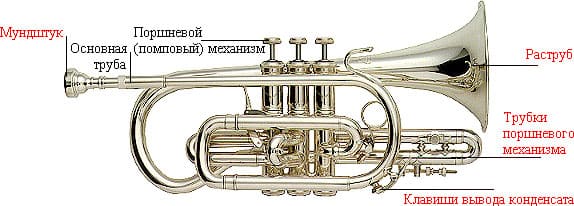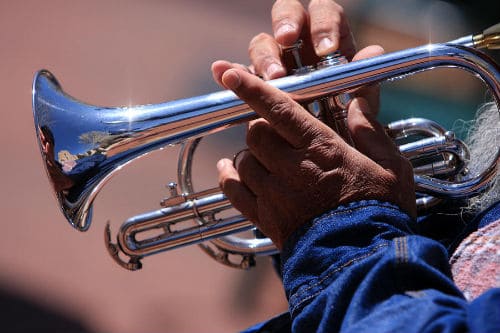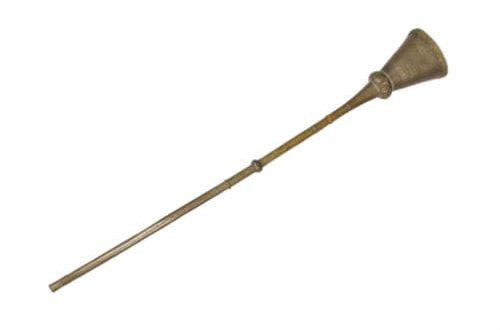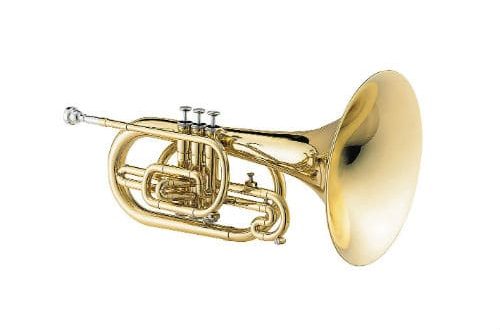
Cornet: description of the instrument, composition, sound, history, use
There are many brass instruments in the world. With their external similarity, each has its own characteristics and sound. About one of them – in this article.
Overview
Cornet (translated from the French “cornet a pistons” – “horn with pistons”; from the Italian “cornetto” – “horn”) is a musical instrument of the brass group, equipped with a piston mechanism. Outwardly, it looks like a pipe, but the difference is that the cornet has a wider pipe.
By systematization, it is part of the group of aerophones: the source of sound is a column of air. The musician blows air into the mouthpiece, which accumulates in the resonating body and reproduces sound waves.

Notes for the cornet are written in the treble clef; in the score, the cornet line is most often located under the trumpet parts. It is used both solo and as part of wind and symphony orchestras.
History of occurrence
The forerunners of the copper instrument were the wooden horn and the wooden cornet. The horn in ancient times was used to give signs to hunters and postmen. In the Middle Ages, a wooden cornet arose, which was popular at tournaments of knights and all kinds of city events. It was used solo by the great Italian composer Claudio Monteverdi.
At the end of the 18th century, the wooden cornet lost its popularity. In the 30s of the 19th century, Sigismund Stölzel designed the modern cornet-a-piston with a piston mechanism. Later, the famous cornetist Jean-Baptiste Arban made a significant contribution to the distribution and promotion of the instrument throughout the planet. French conservatories began to open numerous classes for playing the cornet, instruments, along with the trumpet, began to be introduced into various orchestras.
The cornet came to Russia in the 19th century. The great Tsar Nicholas I, with the virtuosity of great performers, mastered the Play on various wind instruments, among which was a brass cornet-a-piston.

Tool device
Speaking about the design and structure of the instrument, it must be said that outwardly it is very similar to the pipe, but it has a wider and not so long scale, due to which it has a softer sound.
On the cornet, both a valve mechanism and pistons can be used. Valve-operated instruments have become more common because of their ease of use and reliability of tuning stability.
The piston system is made in the form of keys-buttons located on top, in line with the mouthpiece. The body length without the mouthpiece is 295-320 mm. On some samples, a special crown is installed to rebuild the instrument a semitone lower, i.e. from tuning B to tuning A, which allows the musician to quickly and easily play parts in sharp keys.

sounding
The range of the actual sounding of the cornet is quite large – almost three octaves: from the note mi of a small octave to the note up to the third octave. This scope gives the performer more freedom in the elements of improvisation.
Speaking about the timbres of a musical instrument, it must be said that tenderness and velvety sound exist only in the register of the first octave. Notes below the first octave sound more gloomy and ominous. The second octave seems too noisy and sharply sonorous.
Many composers used these possibilities of sound coloring in their works, expressing the emotions and feelings of the melodic line through the timbre of the cornet-a-piston. For example, Berlioz in the symphony “Harold in Italy” used the ominous extreme timbres of the instrument.

Using
Due to their fluency, mobility, beauty of sound, solo lines in major musical compositions were dedicated to cornets. In Russian music, the instrument was used in the Neapolitan dance in the famous ballet “Swan Lake” by Pyotr Tchaikovsky and the dance of the ballerina in the play “Petrushka” by Igor Stravinsky.
The cornet-a-piston conquered the musicians of jazz ensembles as well. Some of the world famous cornet jazz virtuosos were Louis Armstrong and King Oliver.
In the 20th century, when the trumpet was improved, the cornets lost their unique significance and almost completely left the composition of orchestras and jazz troupes.
In modern realities, cornets can occasionally be heard at concerts, sometimes in brass bands. And the cornet-a-piston is also used as a teaching aid for students.





